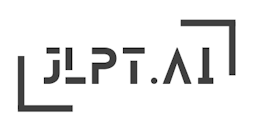

N2
音読み:ryou
訓読み:owaru, tsuitaru
リョウryou
お.わるowaru
つい.たるtsuitaru
Complete, finish, understand
Imagine a person standing at the top of a mountain, looking out at the landscape. This person has completed their journey and gained a deeper understanding of the world around them.
The kanji '了' is a fundamental character commonly found in JLPT materials, particularly at the N2 and N3 levels. Its meanings and readings make it a key component of both kanji and reading comprehension sections of the exam.
彼は仕事を終了しました。
He finished his work.
かれはしごとをしゅうりょうしました。
kare wa shigoto o shuuryou shimashita.
日本の文化を理解するのは難しいです。
Understanding Japanese culture is difficult.
にほんのぶんかをりかいするのはむずかしいです。
nihon no bunka o rikai suru no wa muzukashii desu.
この問題は解決しました。
This problem has been resolved.
このもんだいはかいけつしました。
kono mondai wa kaiketsu shimashita.